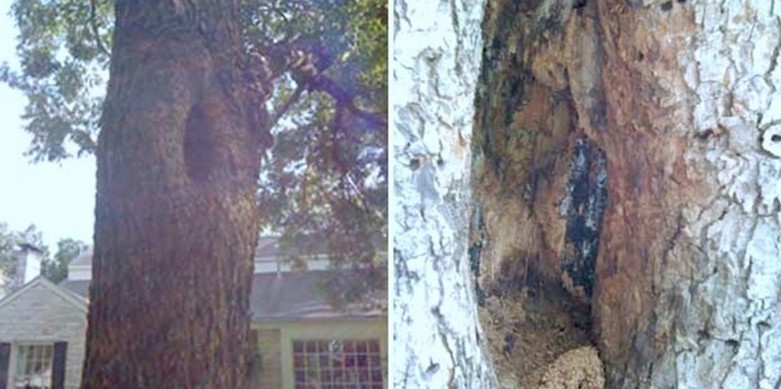
Question and Answer: Wounded Pecan

A Pecan wounded several years ago when a large truck knocked off a branch.

Published January 25, 2012, By NEIL SPERRY and STEVE HOUSER
Question: Do you have any advice regarding this large pecan tree? A large truck knocked off a branch several years ago. We trimmed up the area around the break, but we did nothing else, thinking the tree would heal itself. Last fall I noticed the hole. Since that area faces the street, I had not noticed it before. This is a large tree and it has dropped many big limbs this last year. We are concerned we could lose it if the rotting continues. Any suggestions? C.A., Dallas
Answer: I had my own feelings about how best to handle this tree. I live in a pecan forest, and I see things not too dissimilar in some of my trees from time to time. But, I thought it might be great to get word from the master, so I sent your photos and question on to Steve Houser, owner of an expert tree care company in the Dallas/Fort Worth area. Here is what he replied:
"In essence, the Pecan appears healthy, and there is no obvious reason to believe that the tree would be lost due to health concerns. Trees compartmentalize wounds by growing new tissue on the sides of their wounds. In this case, the wound is now much smaller and could be expected to be fully closed (or compartmentalized) in the years to come. The small round holes in the bark are due to a type of woodpecker and are not a great concern to the health of the tree at this point. There is a small amount of sawdust in the base of the wounded area that may indicate wood borer activity (a wood-boring insect), or it could possibly be from another cause. An occasional borer entering into a wound of a very healthy tree is not a great cause for alarm or treatment. A heavy infestation could be a problem, but the photos do not show reason for a great concern.
"Although the rot and decay may appear to be a concern, as the wound heals (compartmentalizes), it becomes stronger, which helps to offset the decay.
"If limbs were lost in the upper parts of the tree last year, the most likely suspect is a buildup of weight on the ends of longer limbs (the photos do not show the upper parts of the tree). Proper pruning includes the removal of foliage and limbs (or end weight) on longer limbs, which reduces the odds of limb breakage. It is difficult and time consuming [for someone] to climb out on the ends of the limbs, but it is very important, as Pecans (and other fruit-producing species) grow larger over time. In some cases, cabling or bracing of limbs is recommended for limbs with a weak angle of attachment. Also, weight reduction on longer limbs helps to reduce the stress on the trunk and the area of decay noted above."
